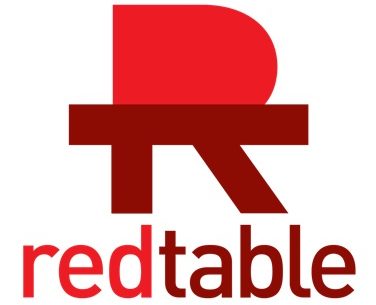Pot calls, often called slate calls, are friction-style calls that are easy to use and produce a range of turkey sounds.
For many turkey hunters using a glass turkey call is the pinnacle of turkey calling. The unique sound produced by the friction between glass and striker allows hunters to mimic an expansive range of hen calls with precision. However, glass calls require much more skill to use effectively compared to other types of turkey calls. With practice and persistence you too can master the art of using a glass turkey call to bag more gobblers.
Choosing Your Glass Call
The first step is selecting a high-quality glass turkey call. The glass surface should be smooth and flawless. Popular options include clear glass stained glass in vibrant colors like blue or red and etched glass with decorative patterns. Mahogany, walnut, and cherry are classic woods used for the pot, which should have a hollow sounding chamber to amplify sound. For the striker, look for one made of durable hardwoods like purpleheart or osage orange.
When shopping for a glass turkey call, test it out to ensure it produces crisp, clear yelps without extra squeaking or scraping sounds. Good brands known for excellent glass calls include Primos, Lynch, Woodhaven, and Owl Caller
Proper Hold and Handling
To use a glass call properly, cradle it gently in your fingers near the edges rather than clutching it in your palm. This allows the sound to resonate within the pot. Keep your grip loose and avoid touching the glass surface during calling to prevent dampening vibrations.
Hold the striker between your thumb and index finger, keeping your wrist firm but relaxed. Position the striker at a 45 degree angle to the glass. Apply light pressure and don’t grind the striker into the glass. The downward motion creates the sound, so lift the striker smoothly on the upstroke.
Conditioning and Care
Brand new glass surfaces are too smooth to generate friction. Use fine grit sandpaper (300-400 grit) to etch in scratch marks, always dragging in the same direction rather than swirling. This creates microscopic grooves for the striker to ride along. Re-condition as needed if the call becomes too slick.
Avoid touching the glass surface when not in use. Finger oils and dirt will necessitate re-conditioning more frequently. Wipe dust off the surface gently with a soft brush or microfiber cloth.
Mastering Basic Call Sounds
With a properly gripped and conditioned glass call, you can now begin practicing:
-
Yelps: Make small oval motions to emulate a hen’s locate call. Speed up the motion for excited yelps.
-
Clucks: Use short, popping striker movements. Vary the force for soft or loud clucks.
-
Putts: Increase pressure and make the striker drag to produce soft, muted putts.
-
Cackles: Use short, fast strokes back and forth while applying firm pressure.
-
Cutting: Accelerate the yelping pace rapidly from slow to frantic.
-
Purrs: Apply heavy pressure and vibrate the striker for the raspy purr sound.
Mix it up with different combinations like clucks mixed into a string of yelps. Pay attention to how factors like pressure, speed, and striker angle influence the tone. With regular practice, you’ll be expertly speaking turkey in no time using your glass call.
Advanced Techniques
Once you’ve mastered the basics, try these advanced glass calling techniques:
-
Alter the resonance by positioning your palm behind the pot to muffle or amplify the sound.
-
Mimic a one-legged hen by holding the pot on its side and using a faster stroking motion.
-
For fly down cackles, rapidly roll the striker across the surface using a loose wrist.
-
For low, murmuring tree yelps, barely lift the striker off the glass between strokes.
-
Switch strikers to create different tones, like a softer sound from a carbon striker.
-
Use slate, crystal, or glass call lids on the same pot for even more sound options.
With creativity and experimentation, a glass call allows you to mimic just about any sound a hen can make. Become a glass call expert this turkey season and fill your tag more effectively!

To make a cutt
Make the same stroke as you would for a cluck, but longer. Quickly follow up with five or six more of the same stroke. Start each pull at the same point and return the striker quickly to the starting point to deliver the cutt calls in a fast sequence.
To make a purr
Grip the striker about a half-inch higher from where you gripped it to make yelps. Exposing more of the striker will change the tone of the call. With light pressure, draw the tip of the striker toward you, from the outer edge of the slate to the middle. As you draw the striker, it will skip lightly across the slate’s surface in a straight line producing a purr. Practice this and the purr will become one of the easiest sounds to make on a slate call.
To create fighting purrs, simply pick up the pace of the purrs using the same motion. Grip the striker a bit lower down and apply more pressure and you’ll create a louder, sharper tone. Increase the frequency and urgency of this call and it will start to sound like an excited flock during flight.
How to use a Glass Turkey Call
FAQ
Which is better, glass or slate turkey call?
- Perform well in wet conditions, such as after thunderstorms
What is the difference between crystal and glass turkey call?
Glass— high-pitched tones with medium rasp. Crystal— best all-around calling surface that covers both loud and soft calling needs with raspy and pure tones. Aluminum— loud and bold high pitches that reach and pull out gobbles from shut-mouth Toms and is the most weather resistant calling surface.
